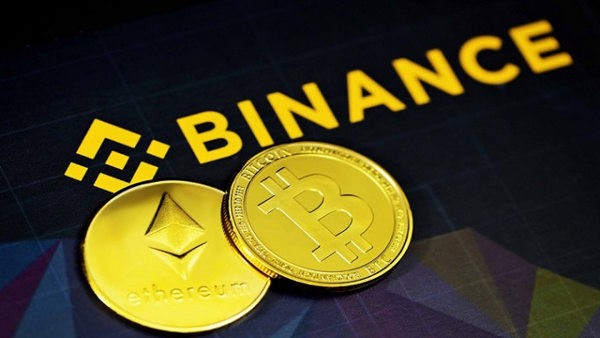-
 Bitcoin
Bitcoin $107,792.7836
-1.83% -
 Ethereum
Ethereum $2,490.3334
-3.99% -
 Tether USDt
Tether USDt $1.0003
0.00% -
 XRP
XRP $2.2177
-2.39% -
 BNB
BNB $652.5191
-1.50% -
 Solana
Solana $146.6253
-4.04% -
 USDC
USDC $1.0001
0.01% -
 TRON
TRON $0.2832
-1.14% -
 Dogecoin
Dogecoin $0.1623
-5.82% -
 Cardano
Cardano $0.5701
-5.05% -
 Hyperliquid
Hyperliquid $38.6009
-4.85% -
 Sui
Sui $2.8604
-5.95% -
 Bitcoin Cash
Bitcoin Cash $487.6897
-2.30% -
 Chainlink
Chainlink $13.0565
-5.05% -
 UNUS SED LEO
UNUS SED LEO $9.0735
0.43% -
 Avalanche
Avalanche $17.6635
-5.16% -
 Stellar
Stellar $0.2382
-2.81% -
 Toncoin
Toncoin $2.7498
-4.12% -
 Shiba Inu
Shiba Inu $0.0...01134
-4.91% -
 Litecoin
Litecoin $86.4080
-3.46% -
 Hedera
Hedera $0.1526
-4.69% -
 Monero
Monero $313.9315
-1.80% -
 Dai
Dai $1.0000
0.00% -
 Polkadot
Polkadot $3.3426
-5.85% -
 Ethena USDe
Ethena USDe $1.0001
-0.02% -
 Bitget Token
Bitget Token $4.4044
-3.80% -
 Uniswap
Uniswap $6.9000
-9.33% -
 Pepe
Pepe $0.0...09552
-5.65% -
 Aave
Aave $263.0698
-6.29% -
 Pi
Pi $0.4693
-4.76%
How to trade a contract on Binance
Binance's contract trading platform enables traders to speculate on future asset prices, but it's crucial to research and practice risk management to minimize potential losses.
Nov 17, 2024 at 06:57 pm

How to Trade a Contract on Binance
Binance is one of the world's top cryptocurrency exchanges, offering a wide range of trading options, including contract trading. Contract trading allows traders to speculate on the future price of an asset without having to own the underlying asset. This can be a great way to generate profits, but it is important to understand the risks involved before getting started.
Step 1: Open a Binance Account
The first step is to open a Binance account. This is a simple process that only takes a few minutes. Once you have created an account, you will need to deposit funds into your account in order to begin trading.
Step 2: Find the Contract You Want to Trade
Binance offers a wide range of contracts to trade, including futures contracts, options contracts, and perpetual contracts. Each type of contract has its own unique features and risks. It is important to do your research before choosing a contract to trade.
Step 3: Place an Order
Once you have chosen a contract to trade, you need to place an order. This can be done through the Binance trading interface. When placing an order, you will need to specify the type of order you want to place, the quantity of the contract you want to trade, and the price at which you want to trade.
Step 4: Monitor Your Trade
Once you have placed an order, you need to monitor your trade closely. The price of the underlying asset can fluctuate rapidly, so it is important to be aware of the latest market conditions. You can use the Binance trading interface to track the performance of your trade.
Step 5: Close Your Trade
When you are ready to close your trade, you need to place a closing order. This can be done through the Binance trading interface. When placing a closing order, you will need to specify the type of order you want to place and the quantity of the contract you want to close.
Step 6: Withdraw Your Profits
Once you have closed your trade, you can withdraw your profits. This can be done through the Binance trading interface. When withdrawing your profits, you will need to specify the amount of money you want to withdraw and the destination address.
Step 7: Practice Risk Management
Contract trading can be a risky activity. It is important to practice risk management techniques in order to protect your capital. Some risk management techniques include setting stop-loss orders, taking profits, and hedging your trades.
Disclaimer:info@kdj.com
The information provided is not trading advice. kdj.com does not assume any responsibility for any investments made based on the information provided in this article. Cryptocurrencies are highly volatile and it is highly recommended that you invest with caution after thorough research!
If you believe that the content used on this website infringes your copyright, please contact us immediately (info@kdj.com) and we will delete it promptly.
- Bitcoin's Pattern Break: Are HODLers the Key to the Next Surge?
- 2025-07-04 18:50:12
- Bitcoin Price, Trump's Bill, and the $150K Dream: A NYC Take
- 2025-07-04 19:50:12
- Ethereum, LILPEPE, and the July Bounce: Will Pepe Steal ETH's Thunder?
- 2025-07-04 19:10:12
- Binance Institutional Loans: Unlocking 4x Leverage and Zero Interest for Whales
- 2025-07-04 19:15:12
- Bitcoin Bull Run: Analysts Eye Peak in Late 2025?
- 2025-07-04 19:20:13
- Pepe Indicators, Bullish Forecast: Can the Meme Coin Rally?
- 2025-07-04 19:25:12
Related knowledge

How to identify the contract value range in combination with the market profile?
Jul 02,2025 at 10:56pm
Understanding the Market ProfileTo effectively identify the contract value range in combination with the market profile, it's essential to first understand what each concept entails. The market profile is a framework that helps traders visualize how price and time interact across a given period, typically a trading day or session. It provides insights i...

How to use the price slope to filter the false breakthrough signal of the contract?
Jun 20,2025 at 06:56pm
Understanding the Concept of Price Slope in Contract TradingIn contract trading, especially within cryptocurrency derivatives markets, price slope refers to the rate at which the price changes over a specific time period. It helps traders assess the strength and sustainability of a trend. A steep slope may indicate strong momentum, while a shallow slope...

How to determine the expected volatility of the contract through the volatility cone?
Jun 19,2025 at 12:28pm
Understanding the Basics of Volatility in Cryptocurrency ContractsIn the realm of cryptocurrency trading, volatility is a key metric that traders use to assess potential risk and reward. When dealing with futures contracts, understanding how volatile an asset might become over time is crucial for position sizing, risk management, and strategy developmen...

How to formulate a contract intraday trading plan in combination with the pivot point system?
Jun 21,2025 at 03:42pm
Understanding the Basics of Pivot Points in Cryptocurrency TradingPivot points are technical analysis tools used by traders to identify potential support and resistance levels. These levels are calculated using the previous day's high, low, and closing prices. In the context of cryptocurrency trading, where markets operate 24/7, pivot points help trader...

How to adjust the contract position ratio through the price fluctuation entropy?
Jun 22,2025 at 11:42am
Understanding Price Fluctuation Entropy in Cryptocurrency ContractsIn the world of cryptocurrency futures trading, price fluctuation entropy is a relatively new concept used to measure market volatility and uncertainty. It derives from information theory, where entropy refers to the degree of randomness or unpredictability in a system. In crypto contrac...

How to use the volume swing indicator to predict the contract volume-price divergence?
Jun 18,2025 at 11:42pm
Understanding the Volume Swing IndicatorThe volume swing indicator is a technical analysis tool used primarily in cryptocurrency trading to evaluate changes in volume over time. Unlike price-based indicators, this metric focuses solely on trading volume, which can provide early signals about potential market reversals or continuations. The key idea behi...

How to identify the contract value range in combination with the market profile?
Jul 02,2025 at 10:56pm
Understanding the Market ProfileTo effectively identify the contract value range in combination with the market profile, it's essential to first understand what each concept entails. The market profile is a framework that helps traders visualize how price and time interact across a given period, typically a trading day or session. It provides insights i...

How to use the price slope to filter the false breakthrough signal of the contract?
Jun 20,2025 at 06:56pm
Understanding the Concept of Price Slope in Contract TradingIn contract trading, especially within cryptocurrency derivatives markets, price slope refers to the rate at which the price changes over a specific time period. It helps traders assess the strength and sustainability of a trend. A steep slope may indicate strong momentum, while a shallow slope...

How to determine the expected volatility of the contract through the volatility cone?
Jun 19,2025 at 12:28pm
Understanding the Basics of Volatility in Cryptocurrency ContractsIn the realm of cryptocurrency trading, volatility is a key metric that traders use to assess potential risk and reward. When dealing with futures contracts, understanding how volatile an asset might become over time is crucial for position sizing, risk management, and strategy developmen...

How to formulate a contract intraday trading plan in combination with the pivot point system?
Jun 21,2025 at 03:42pm
Understanding the Basics of Pivot Points in Cryptocurrency TradingPivot points are technical analysis tools used by traders to identify potential support and resistance levels. These levels are calculated using the previous day's high, low, and closing prices. In the context of cryptocurrency trading, where markets operate 24/7, pivot points help trader...

How to adjust the contract position ratio through the price fluctuation entropy?
Jun 22,2025 at 11:42am
Understanding Price Fluctuation Entropy in Cryptocurrency ContractsIn the world of cryptocurrency futures trading, price fluctuation entropy is a relatively new concept used to measure market volatility and uncertainty. It derives from information theory, where entropy refers to the degree of randomness or unpredictability in a system. In crypto contrac...

How to use the volume swing indicator to predict the contract volume-price divergence?
Jun 18,2025 at 11:42pm
Understanding the Volume Swing IndicatorThe volume swing indicator is a technical analysis tool used primarily in cryptocurrency trading to evaluate changes in volume over time. Unlike price-based indicators, this metric focuses solely on trading volume, which can provide early signals about potential market reversals or continuations. The key idea behi...
See all articles

























































































